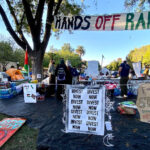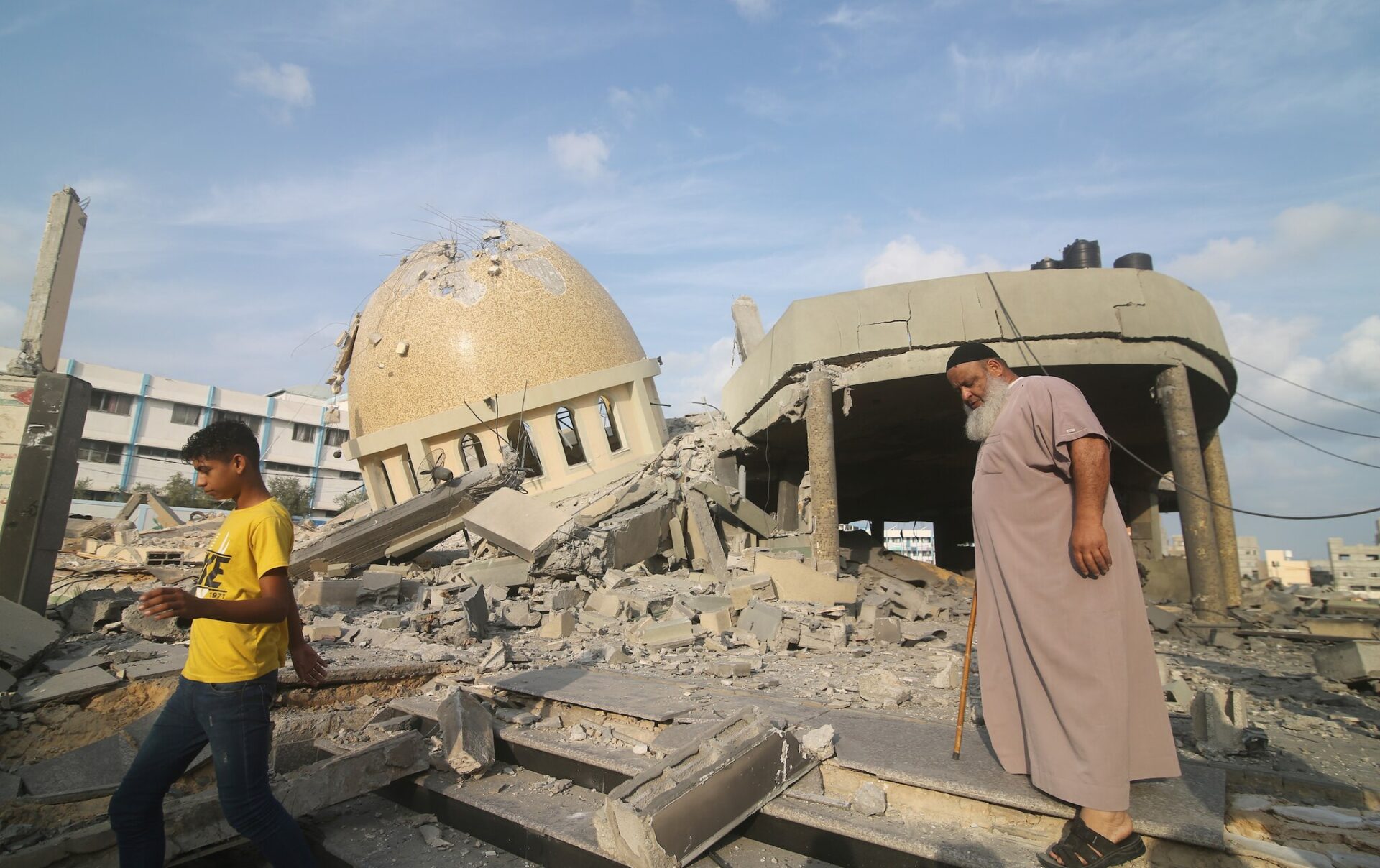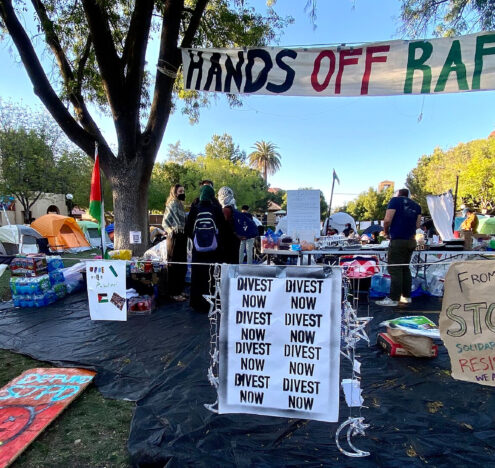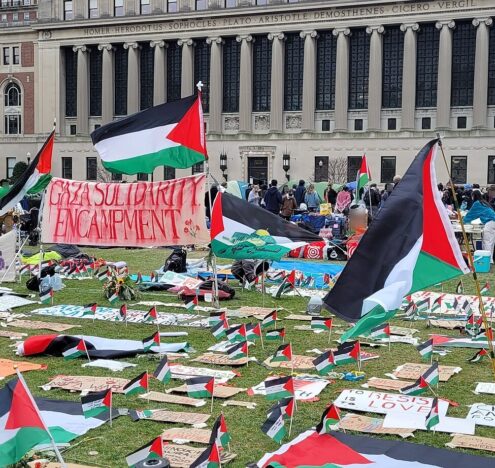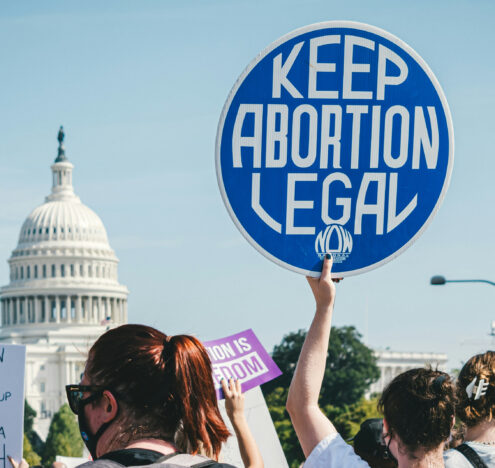Amid the fighting in the Gaza Strip, emotions are running high worldwide. Officials, analysts, and the public are attempting to process the shocking escalations of violence in what was already one of the most politically fraught conflicts. To make matters worse, the internet is being saturated with propaganda and misinformation, while Israel and Hamas trade blame for atrocities.
Israel now faces charges of genocide at the International Court of Justice (ICJ). Israel’s defenders say its military campaign is self-defense against genocidal attackers. Lawyers and judges will no doubt continue to argue about how to appropriately interpret the facts of the case and how to apply the law, and the genocide hearings will likely take years to reach a verdict. However, as social scientists we can already assess the violence in Israel and Gaza based on other objective criteria.
On Oct 7, 2023, Hamas-led militants breached the border fence surrounding Gaza and attacked southern Israel, leaving 1,139 Israelis and foreigners killed, mostly civilians, and kidnapping some 240 hostages. In response, Israel declared war on Hamas, cutting off food, water, and electricity, dropping thousands of bombs across the Gaza Strip, and launching a full-scale ground assault. Thus far, more than 30,000 Palestinians have been killed, mostly civilians, while nearly the entire population of two million has been forcibly displaced.
In the face of so much death and destruction, the political controversy surrounding the Israel-Palestine issue, and the contradictory accounts of fighting in Gaza, it can be difficult to guard against the emotional biases and political distortions that often pervade heightened public discourse around warfare. As the maxim goes, truth is the first casualty of war.
As scholars of conflict and political violence, it is our job to seek clear and consistent ways to understand concepts like war, terrorism, and coercion with sufficient empiricism to avoid being confused or disoriented by the passions of the moment. To that end, we will discuss three objective elements of the violence in Israel and Gaza in service of appropriately defining the conflict: the types of political actors involved in the fighting, the numbers of fatalities, and the dynamics between combatants and civilians.
Based on these three elements, it is difficult to characterize the Israeli military campaign as war. In fact, applying objective criteria used by the Correlates of War project (COW), a widely used resource on historical armed conflicts, it’s debatable whether any of the violence between Israel and Palestinian groups in the past two decades could be classified as war. Technically speaking, the more appropriate classification is colonial massacre.
Colonial Violence
Datasets provide an empirical basis for analysis – they do not tell the whole story, but in the face of conflicting narratives, a common set of agreed-upon facts and definitions is a good place to start. The COW datasets use a “Typology of War” originally proposed in 1982 that defines war based on key observable criteria: “sustained combat, involving organized armed forces, resulting in a minimum of 1,000 battle-related fatalities … within a twelve month period.”
There are additional categories of war based on the empirical features of specific conflicts. For example, wars between two or more states are classified as inter-state wars. Warfare within the recognized territory of a single state is classified as intra-state war (or “civil war”). And wars between a state and a non-state entity, meaning a group lacking sovereignty or recognition within the international system, are classified as extra-state wars.
Extra-state wars are further categorized into two subtypes: “colonial war” between a state and a non-state entity within a territory controlled by the state, and “imperial war” between a state and a non-state actor outside the borders of the state.
Other definitions consider the ability to assert effective authority over a given territory. This is meant to exclude from “war” events like gun battles between armed gangs or between a criminal enterprise and state forces in a context where the state maintains overall control over the territory in question.
Israel is a sovereign state. The Gaza Strip is a territory outside the recognized territory of Israel but with borders, airspace, and economic regulations that are directly controlled by Israel, making it definitionally a “protectorate” or “dependency.” Hamas is a non-state organization that governs Gaza by force but without sovereignty or full recognition in the international system. Based on the COW criteria, if the current conflict were to be classified as a war it would be an extra-state war, specifically a colonial war – the same way COW coded the years-long “al-Aqsa Intifada” (also known as the “Second Intifada”) that started in 2000.
Wars and Massacres
If the conflict in Gaza is a war, COW criteria would classify it as a “colonial war,” but does it meet the criteria for war in the first place?
The conflict clearly meets the first requirement of at least 1,000 combat fatalities within a year. However, the COW typology includes another important criterion of war: both sides must have the military capacity to mount “effective resistance,” assessed in terms of the relative fatalities inflicted by both sides. The weaker opponent must be able to inflict at least 5% of the combat fatalities that it sustains. Conflicts in which the stronger side sustains any less than 5% of the deaths that it inflicts are not considered wars, but are instead called “massacres” or “one-sided state killings.”
Let’s look at the fatality numbers in Israel and Gaza.
Between the Oct. 7 attack and fighting in Gaza, Israel has suffered about 1,416 fatalities, counting both foreign nationals and Israelis killed in friendly fire. Israeli estimates say 1,139 people were victims on Oct. 7, including 695 Israeli civilians, 373 soldiers, and 71 foreign civilians. The Israeli military says that about 246 soldiers and 31 hostages have been killed in Gaza since then.
As of this writing, Israeli forces have killed more than 30,000 Palestinians in Gaza. Israel reportedly estimates that between 1,000 and 1,500 Palestinian militants were killed in Israel during the assault on Oct. 7. Based on the numbers we have today, the total number of Israelis killed (1,416) amounts to 4.5% of the conservative estimate of Gazans killed by the Israeli military (31,000) – below the minimum threshold for effective resistance if we count both combatants and civilians.
The present scale of death and destruction in Gaza is far greater than any violence between Israelis and Palestinians since the formation of the State of Israel in 1948. However, in terms of the proportion of fatalities on either side, the current fighting is fairly consistent with previous episodes of conflict between Israel and Hamas since Hamas took power in Gaza in 2007.
The United Nations Office for the Coordination of Humanitarian Affairs (OCHA) documents casualty data for Israelis and Palestinians from 2008, the first major fighting following Hamas’ ascent in Gaza, until 2023 just prior to the Oct. 7 attack. Looking at the fatalities on both sides from 2008 to pre- Oct. 7 2023, the total number of Israeli deaths (308) amounts to 4.8% of the total number of Palestinians killed by Israel (6,407). Narrowing the data to only include deaths from fighting in Gaza, the number of Israelis killed (52) is less than 1% of Gazans killed (5,365) during this 15-year period.
The term ‘war’ implies a contest of arms between roughly comparable armed forces.
The OCHA data marks four periods of “major hostilities” between Israel and the Palestinians: 2008-2009, 2012, 2014, and 2021. Two of these conflicts involved more than 1,000 total deaths, and none of them came close to the threshold for effective resistance. Although these episodes were widely termed “wars” in the media, by the numbers they were massacres.
While some have challenged both the Gaza Health Ministry’s and United Nations’ data on civilian casualties, both of those sources have been widely validated as reliable. Even if we only count combatant deaths reported by Israel – meaning excluding civilian deaths on both sides – the result still fails to meet the criteria for war.
Israel’s most recent publicly available estimates, from January 2024, say Israeli forces have killed about 12,000 Hamas fighters since Oct. 7, along with about 1,000 militants on that day (13,000 in total). According to the most recent numbers as of this writing, Israel estimates it lost 373 soldiers on 7 Oct. and 246 soldiers since then (619 in total). Based on these numbers, Hamas has inflicted 4.8% of the combatant fatalities it sustained, again falling below the minimum threshold for effective resistance. However, we should note that Hamas claimed last month it had lost only about 6,000 fighters – half the forces that Israel estimates it has killed. If we use Hamas’ numbers and also exclude all civilian fatalities, the ratio of combat fatalities (10%) would meet the threshold for effective resistance.
The effective resistance requirement is significant because it emphasizes that in conflict, power disparities matter tremendously. The term “war” implies a contest of arms between roughly comparable armed forces. If the killing is so one-sided that it fails this minimum test of effective resistance, it doesn’t qualify as a war, and is likely the sort of state violence that could justify international intervention under the responsibility to protect civilians.
Soldiers vs. Civilians
Wars involving non-state actors can be especially difficult to research. In some cases, governments have simply not counted deaths from non-state groups, making information about their casualties too unreliable or inconsistent for social scientific verification. For this reason, the original COW typology only considered fatalities among state forces, excluding those suffered by civilians and non-state groups (like Hamas). Other major datasets, such as the Uppsala Conflict Data Program, do not define war, but instead separately categorize “armed conflicts” and “one-sided violence.” The major distinction drawn between the two is whether fatalities were armed combatants or civilians.
Clearly, the conflict between Israel and Hamas – and conflicts in general – should be assessed based on both civilian and combatant deaths on all sides if at all possible. That is because systematically ignoring them would entirely misrepresent the dynamics and human costs of state violence. And in the case of Israel and Gaza, we have reliable enough data on overall fatalities for all sides. In fact, the ongoing violence in Gaza constitutes one of the most well-documented mass killings in history.
However, it is not just the disparity in casualties, but the particular dynamic between the belligerents that makes this conflict more massacre than war.
Israel controls Gaza’s borders, coastline, and airspace. Hamas was able to kill hundreds of Israeli civilians in the Oct. 7 attack, shocking the Israel Defense Forces and wounding the Israeli national psyche, but in general Hamas has little ability to significantly damage Israel militarily. The Israeli civilian population is protected by now-secured borders, a modern conventional military, the Iron Dome anti-missile system, and security guarantees from the strongest military in the world.
Hamas, on the other hand, has no ability to protect Palestinian territory or civilians from Israeli airpower. And with the entire Gaza Strip exposed and its borders closed, Hamas has no ability to provide aid or move civilians out of harm’s way, even if it had the will to do so. Though often rightly accused of using civilians as human shields, the reality is that Hamas has little choice. It can use tunnels to hide its combat forces and ambush Israeli troops, but Israeli soldiers can kill Palestinian civilians and destroy civil infrastructure at will.
The result is an extraordinarily asymmetric conflict in which a state’s advanced conventional military is fighting an irregular force of violent non-state actors, while civilians on one side only are subjected to indiscriminate bombing and crossfire, all within political borders controlled by the other side.
When War Isn’t War
The point of this type of clinical analysis is to be able to help discuss complex and emotionally-wrenching violence across contexts with consistency. There are few conflicts in the world that are more historically, culturally, and politically fraught than Israel and Palestine. And with much confusion and misinformation in the air, many of the numbers, including those we use, are not fully verifiable. However, in the ongoing violence in Gaza, there are certain things that are empirically clear.
One side is a sovereign state while the other is a kind of dependency, a formerly occupied and currently encircled non-state territory under the control of a state to which it does not belong. One side is militarily incapable of effectively resisting the other, and both combatant and civilian fatalities are vastly disproportionate.
The ICJ will spend the next several years determining whether Israel is guilty of genocide. In the meantime, whatever our personal attachments and opinions on the conflict, we should strive for intellectual honesty and precision in the terms we use to discuss the horrific violence in Israel and Gaza. As the fighting drags on and Palestinian casualties continue to mount, it is increasingly clear that social scientists and historians will not regard what’s happening in Gaza as a war, but as a massacre.






